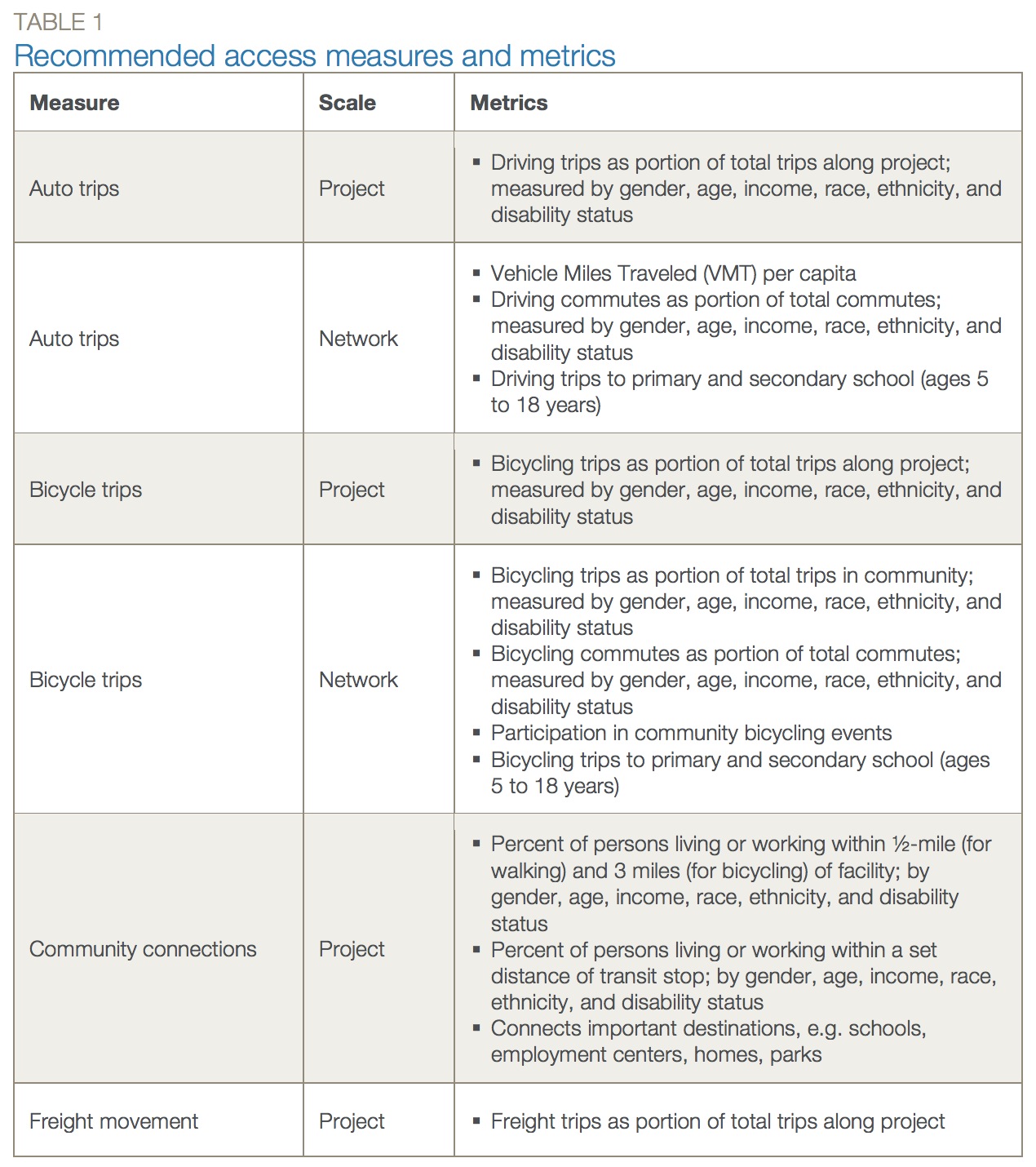SMART GROWTH AMERICA
AARP
Introduction to this resource
Across the country, government agencies are working to meet residents’ demands to be more responsive, transparent, and accountable in decisions and investments. Transportation agencies are not exempt from this call—and they face the additional challenges of dwindling capital and maintenance budgets. Performance measures, in the broad sense, provide a quantitative and, sometimes, qualitative indicator of potential or actual performance of a specific street, a corridor, or of the whole transportation network.
Performance measures are not new, but they have typically been used to review system-level outcomes specific to motor vehicles, such as pavement quality, congestion, and injurious crashes. Over the last decade, the National Complete Streets Coalition has promoted the use of performance measures that better reflect multimodal needs and that are relevant to individuals using the system. Expanding the range of performance measures and deploying them to understand individual projects allows transportation agencies to clearly connect investments to community goals. Ultimately, communicating how projects perform can bolster support among residents and elected officials for continued investment in Complete Streets efforts.
Performance measurement includes establishing performance targets, modeling impacts, and monitoring results. This document focuses on the final step: evaluating the results of projects. While some agencies have done multimodal analyses before and after completing a project, they are in limited company. But measuring conditions before a project and comparing the post-construction environment to that baseline can be the most valuable aspect of performance measurement. For elected leaders and residents, before-and-after analyses demonstrate how well a project achieved its intended goals. For transportation planners and engineers, measuring the actual results of projects allows them to make better-informed choices for future projects. The results may be rolled up into corridor- or network-wide measures that show the impact of an annual transportation budget and how a community is achieving its Complete Streets vision.
This resource, meant for agencies interested in but just beginning their project evaluation efforts, intends to:
- Provide general steps to take in evaluating projects.
- Discuss useful measures for common Complete Streets goals of access, economy, environment, equity, place, public health, and safety, and the metrics that a jurisdiction may use.
- Offer a few tips for using those measures to tell the story of a project once it is completed.
- Share further resources for those ready to dive deeper into the why and how of performance measurement for Complete Streets.
About transportation performance measures
Performance measures allow public agencies to align their decisions at each phase of project development and delivery with established community goals. The adage “what gets measured gets done” is helpful in understanding how performance measures affect results. Conventional transportation measures, focused on automobile movement, have resulted in projects that expand roadway capacity and speed.
Success in a Complete Streets paradigm means adopting different measures of success—what we want to get done must get measured. This shift requires agencies to adopt measures that reflect the quality of place and environment, that better relate to how people interact with and understand their community, that direct investments toward creating transportation systems that are comfortable and convenient for accessing jobs, health care, education, and civic life by foot, bicycle, and transit in addition to the automobile.
Performance measures, generally, can be interpreted to mean the data inputs used when:
- Undertaking long-range planning efforts
- Selecting projects to fund
- Performing an alternatives analysis—an evaluation of all reasonable options for a transportation project
- Considering specific elements when finalizing a project’s design
- Evaluating the outcomes of a built project—the focus of this document
- Displaying the current state of a system, as with a dashboard
Download full version (PDF): Evaluating Complete Streets Projects: A Guide for Practitioners
About Smart Growth America
www.smartgrowthamerica.org
Smart Growth America advocates for people who want to live and work in great neighborhoods. We believe smart growth solutions support thriving businesses and jobs, provide more options for how people get around and make it more affordable to live near work and the grocery store. Our coalition works with communities to fight sprawl and save money. We are making America’s neighborhoods great together.
About AARP
www.aarp.org
AARP is a nonprofit, nonpartisan organization, with a membership of more than 37 million, that helps people turn their goals and dreams into real possibilities, strengthens communities and fights for the issues that matter most to families such as healthcare, employment security and retirement planning. We advocate for consumers in the marketplace by selecting products and services of high quality and value to carry the AARP name as well as help our members obtain discounts on a wide range of products, travel, and services.
Tags: AARP, National Complete Streets Coalition, Smart Growth America







 RSS Feed
RSS Feed